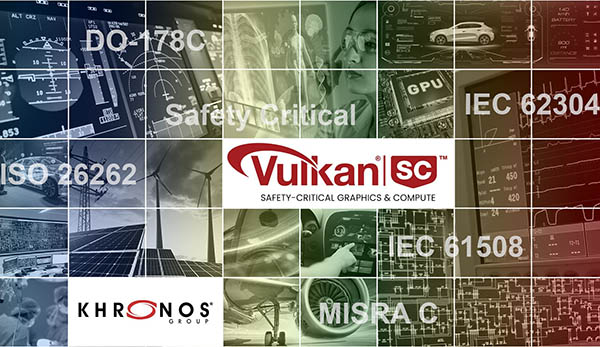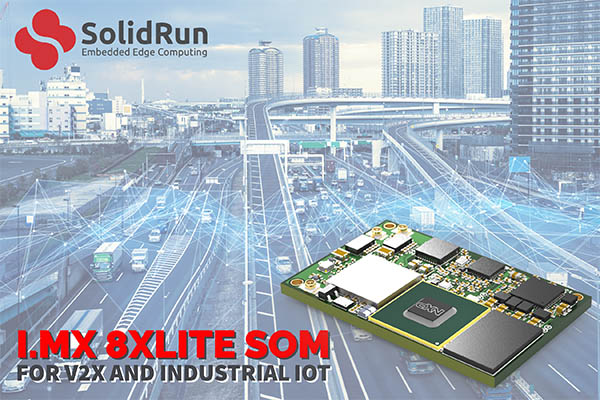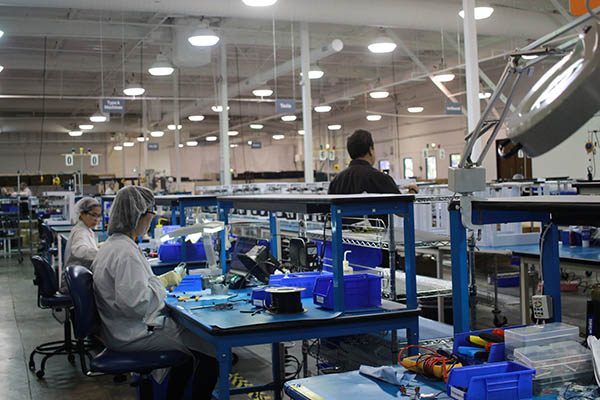Editors’ Picks





Found in Robotics News & Content, with a score of 1.05
…systems in applications such as robotics, vehicles, and factories.” “NXP is pleased to support CoreAVI on their VkCore SC driver technology enabling the newly ratified Vulkan SC API,” added Dan Loop, vice president and general manager of automotive edge processing at NXP Semiconductors. “As CoreAVI's long-time partner on our i.MX applications processors, NXP is dedicated to expanding our graphics driver enablement into broad market safety applications requiring advanced graphics and compute.” “We already have collaborated with CoreAVI in demonstrating ISO 26262-compliant digital instrument clusters,” said Tero Sarkkinen, founder and CEO of Basemark. “We’re very much looking forward to further collaborations…

Found in Robotics News & Content, with a score of 1.88
…as product branding and enclosure design. SolidRun uses new NXP processor for V2X communications Targeting vehicle telematics, vehicle-to-vehicle (V2V), and vehicle-to-infrastructure (V2I) communications, plus road infrastructure connectivity and industrial equipment, SolidRun said its i.MX 8XLite Mini SOM provides a foundation for secure V2X applications. It includes real-time synchronization and control for a variety of smart-city uses. The system combines the high-performance application processing from NXP’s new i.MX 8X processor with V2X acceleration and its RoadLINK SAF5400 single-chip Dedicated Short-Range Communications (DSRC) modem for next-generation telematics, said SolidRun. “In order to accelerate the adoption of autonomous vehicle technology, we need to…

Found in Robotics News & Content, with a score of 0.52
…installed base for its AMHS includes Texas Instruments (TI), NXP Semiconductors, On-Semi, Global Foundry, ST Micro, TSMC, SSMC, and UMC. In addition, SK and BriteLab said they will jointly develop CE and CM business for U.S.-based customers, as well as smart vision systems. BriteLab AMHS uses overhead robots BriteLab said its AMHS includes an Overhead Hoist Transport (OHT) system, which uses ceiling- and floor-mounted robots in high-tech factories. The robots are autonomous vehicles managed and controlled by software to support fast and accurate automation of production lines, it said. Under the new agreement, the two companies said they have established…

Found in Robotics News & Content, with a score of 0.79
…from best-in-class automotive technology leaders, including ARM for processors, NXP for the central compute platform, FLIR for thermal cameras, and Dataspeed for a by-wire control systems, among other functionalities. “The Capability Demonstrator mirrors the behavior of VSI Labs’ physical vehicle so that corner cases can be tested that are too rare, too dangerous, or too difficult to test in actual driving conditions,” says David Frit, senior director, Autonomous and ADAS SoCs for Siemens. The PAVE360 pre-silicon autonomous validation environments serves as a comprehensive platform for multi-supplier collaboration across the entire AV ecosystem. PAVE360 simulation capabilities go beyond processors to create…
Found in Robotics News & Content, with a score of 1.17
…Group meeting will be held Friday, December 6, at NXP Semiconductors, Schatzbogen 7, 81829 Munich, Germany. The meeting is planned from 10 a.m. to 4 p.m. CEST and will include presentations on industry best practices and requirements, and will explore directions for standardization. Attendance is open to everyone, but registration is required. Participants in the PWG do not need to be from Accellera member companies. The objective of the PWG is to explore the need for a unified approach to enable a functional safety solution. Sources: Press materials received from the company and additional information gleaned from the company’s website.
Found in Robotics News & Content, with a score of 0.38
…Mahatme, technology lead for the microcontroller business line at NXP Semiconductors. “The simplified hardware of RISC chips requires fewer transistors to be powered, reducing the power consumption. This has made ARM chips popular for battery-powered mobile devices and wearables, while higher performance x86 processors are better suited for personal computers, laptops and servers.” For a given microarchitecture, a lot of trade-offs between power and performance are made through choices such as processor pipeline depth, out-of-order execution, size of the address and data bus, multi-core architectures, frequency of operations and memory hierarchy. Each of these options requires a careful trade-off between…



